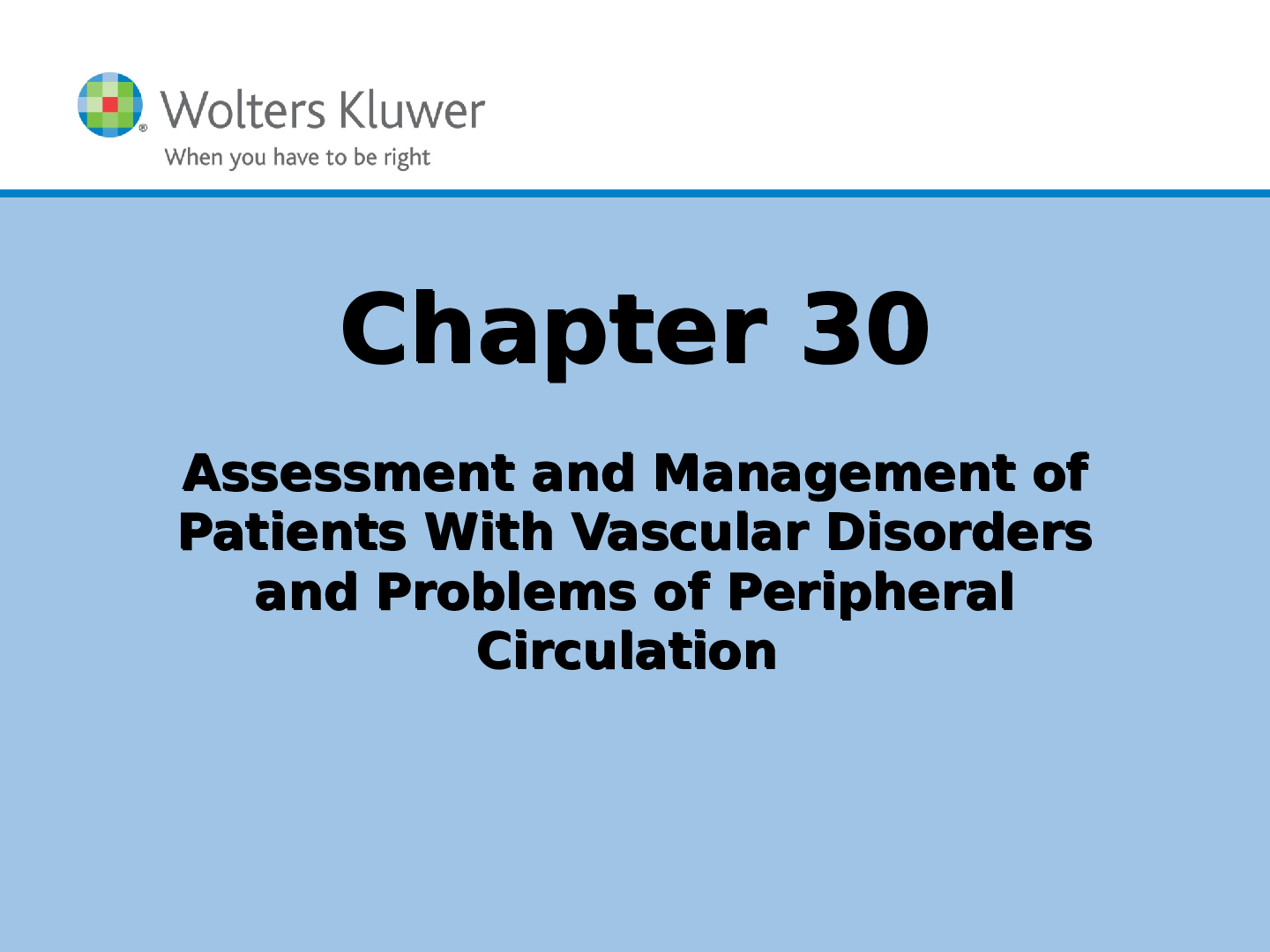
Rasmussen College - MCB 2289 Microbiology Final Exam|Module 11/ Already Graded A
*NURSING > Text Book Notes > Med Surg: Chapter 30 Assessment and Management of Patients With Vascular Disorders and Problems of P (All)
Vascular System Consists of two interdependent systems o Right side of the heart pumps blood through the lungs to the pulmonary circulation o Left side of the heart pumps blood to all other bod ... y tissues through the systemic circulation Arteries and arterioles- carry blood from the heart to the tissues Capillaries- permits rapid and efficient transport of nutrients to the cells and removal of metabolic wastes Veins and venules- Capillaries join to form larger vessels called venules, which join to form veins. Lymphatic vessels Copyright © 2018 Wolters Kluwer · All Rights Reserved Function of the Vascular System Function of the Vascular System Circulatory needs of tissuesaverage amount of oxygen removed collectively by all of the body tissues is about 25%. This means that the blood in the vena cava contains about 25% less oxygen than aortic blood Blood flow- body, an increase in driving pressure is accomplished by an increase in the force of contraction of the heart. Blood pressure Copyright © 2018 Wolters Kluwer · All Rights Reserved Function of the Vascular System unction of the Vascular System Capillary filtration and reabsorptioncomposition as plasma without the proteins, forms the interstitial fluid. quilibrium between hydrostatic and osmotic forces of the blood and interstitium, as well as capillary permeability, Hemodynamic resistance- most important factor that determines resistance in the vascular system is the vessel radius. Small changes in vessel radius lead to large changes in resistance. Peripheral vascular regulating mechanisms- integrated and coordinated regulatory system is necessary so that blood flow to individual tissues is maintained in proportion to the needs of those tissues. Copyright © 2018 Wolters Kluwer · All Rights Reserved Pathophysiology of the Vascular System Pump failure- Inadequate peripheral blood flow occurs when the heart’s pumping action becomes inefficient. Alterations in blood and lymphatic vessels- obstructed as a result of atherosclerotic plaque, thromboemboli, chemical or mechanical trauma, infections or inflammatory processes, vasospastic disorders, and congenital malformations. Circulatory insufficiency of the extremities Copyright © 2018 Wolters Kluwer · All Rights Reserved Systemic and Pulmonary Circulation Systemic and Pulmonary Circulation Copyright © 2018 Wolters Kluwer · All Rights Reserved Arterial Disorders Arteriosclerosis and atherosclerosis Peripheral arterial occlusive disease Upper extremity arterial occlusive disease Aortoiliac disease Aneurysms (thoracic, abdominal, other) Dissecting aorta Arterial embolism and arterial thrombosis Raynaud phenomenon and other acrosyndromes Copyright © 2018 Wolters Kluwer · All Rights Reserved Gerontologic Considerations Gerontologic Considerations Aging produces changes in the walls of the blood vessels that affect the transport of oxygen and nutrients to the tissues intima thickens as a result of cellular proliferation and fibrosis. Elastin fibers of the media become calcified, thin, and fragmented, and collagen accumulates in the intima and the media Changes cause vessels to stiffen and results in: o Increased peripheral resistance o Impaired blood flow o Increased left ventricular workload Copyright © 2018 Wolters Kluwer · All Rights Reserved Assessment of the Vascular System Assessment of the Vascular Health history Intermittent claudication, A muscular, cramp-type pain, discomfort, or fatigue in the extremities consistently reproduced with the same degree of exercise or activity and relieved by rest is experienced by patients with peripheral arterial insufficiency, sensation of coldness or numbness in the extremities “Rest pain”- Persistent pain in the forefoot (i.e., the anterior portion of the foot) when the patient is resting indicates a severe degree of arterial insufficiency and a critical state of ischemia Copyright © 2018 Wolters Kluwer · All Rights Reserved Assessment of the Vascular System Assessment of the Vascular System Physical assessment o Skin (cool, pale, pallor, rubor, loss of hair, brittle nails, dry or scaling skin, atrophy, Cyanosis and ulcerations) o Pulses o **** only the index finger for palpation Copyright © 2018 Wolters Kluwer · All Rights Reserved Diagnostic Evaluation [Show More]
Last updated: 3 years ago
Preview 1 out of 69 pages

Buy this document to get the full access instantly
Instant Download Access after purchase
Buy NowInstant download
We Accept:

Can't find what you want? Try our AI powered Search
Connected school, study & course
About the document
Uploaded On
May 09, 2021
Number of pages
69
Written in
All
This document has been written for:
Uploaded
May 09, 2021
Downloads
0
Views
130
Scholarfriends.com Online Platform by Browsegrades Inc. 651N South Broad St, Middletown DE. United States.
We're available through e-mail, Twitter, Facebook, and live chat.
FAQ
Questions? Leave a message!
Copyright © Scholarfriends · High quality services·